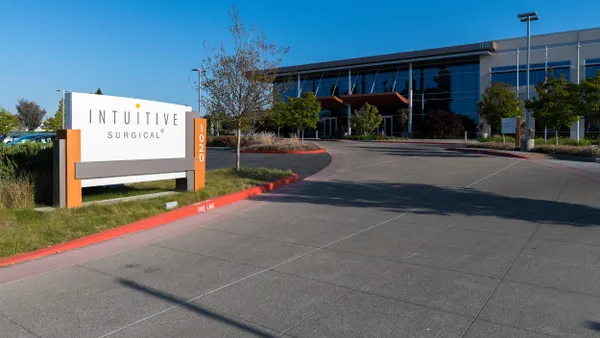Dive Brief:
-
FDA has become significantly more likely to approve applications for premarket approval (PMA) since it revised the panel meeting process in 2010, lawyers from Hyman Phelps & McNamara wrote in Food and Drug Law Institute blog post.
-
In the five years preceding the changes, FDA approved 70% of PMAs that were sent for review by a panel of experts. After the changes, the approval rate shot up to 92%.
-
The analysis showed that devices are typically approved if the panel votes in favor of their safety and benefit-to-risk ratio. Votes on device effectiveness do not correlate to the chances of approval.
Dive Insight:
FDA has used panel meetings to help it evaluate the high-risk, Class III devices that follow the PMA pathway since the 1970s but the process has changed over that time. For most of the history of panel meetings, the experts held a public vote on a single question: Do you recommend approval of this device?
That changed in 2010 when FDA introduced anonymous voting on three separate questions about the safety, effectiveness and benefit-to-risk ratio of the device. To assess the impact of the changes, researchers looked at 37 panel meetings under the old system and 52 under the new system.
Under the old system, 11 of the 37 hearings led to FDA rejecting the device, the lawyers found. Under the new system, FDA rejected four of the 52 PMAs.
"In essence, PMAs that have gone to panel under the new system have been very likely to be approved. This suggests that FDA is generally not sending PMAs to an advisory panel unless they meet a fairly robust threshold," they wrote.
Across the three separate votes cast at the 52 post-change panels, a majority of the experts voted against either the safety, effectiveness or benefit-to-risk ratio 20% of the time. In many cases, FDA went on to approve the device even if the panel issued a negative vote on one of the elements it was asked to assess, although it reached its decision faster if most of the votes were positive.
A deeper dive into the link between negative votes and approval decisions revealed that the safety and benefit-to-risk ratio rulings appear to have the most influence on FDA. Positive votes on these topics are significantly associated with the likelihood of approval.
The data suggest the effectiveness vote is less influential. The study found no significant correlation between effectiveness and chances of approval, likely because three of the four PMAs rejected by FDA had positive votes on effectiveness. Most of the rejected PMAs suffered negative benefit-to-risk ratio votes.
The study also looked at the timelines associated with panel meetings. Under the new system, the lag between the meeting and PMA decision date was 243 days, compared to 345 days under the old model. The authors attribute the 111 day improvement to user fee commitments and other policies related to PMA processing.










